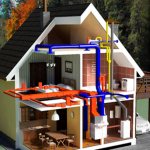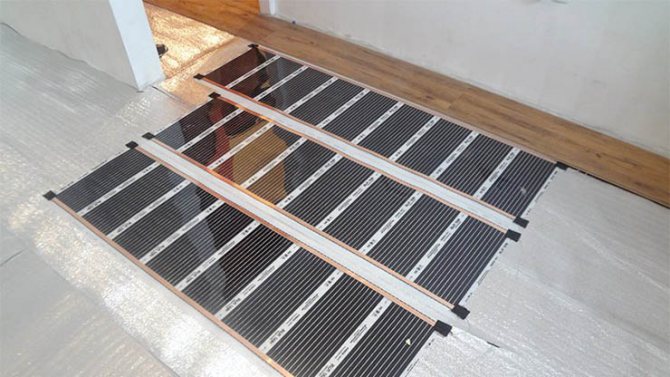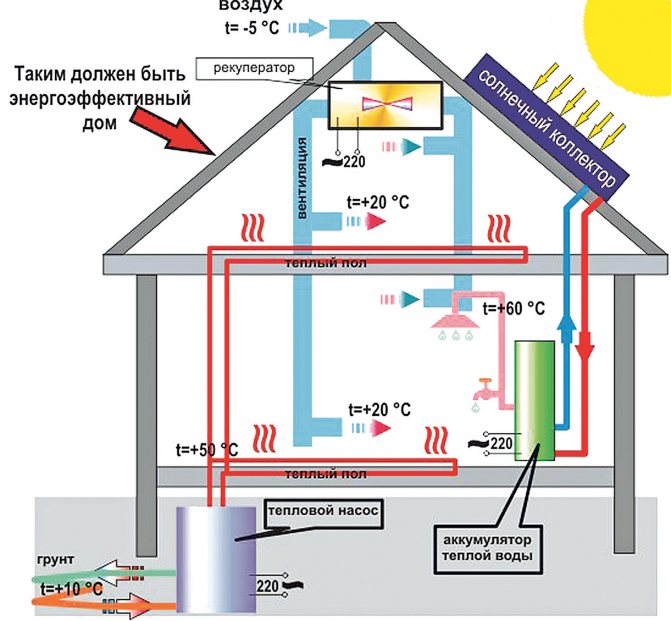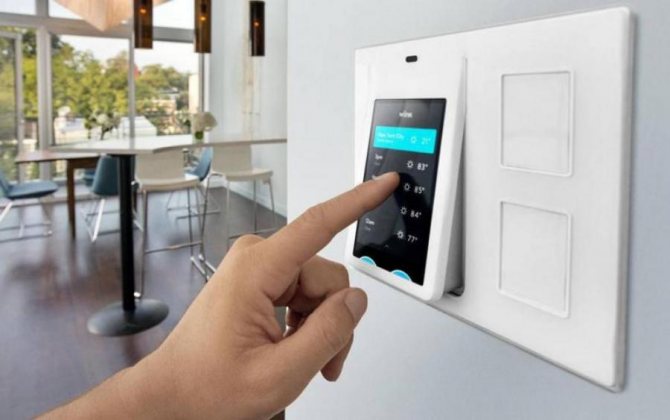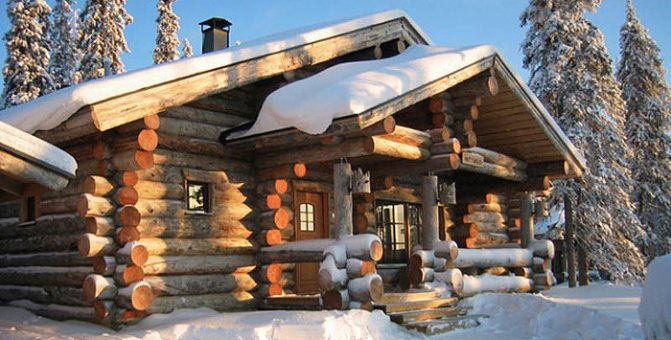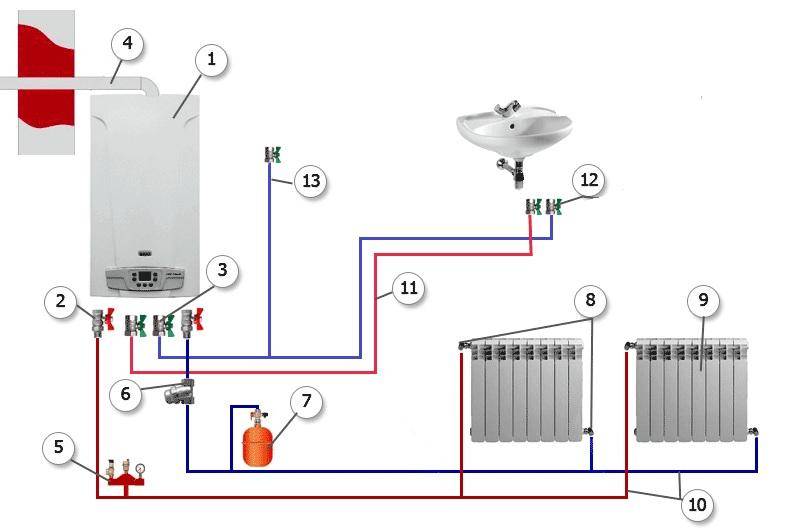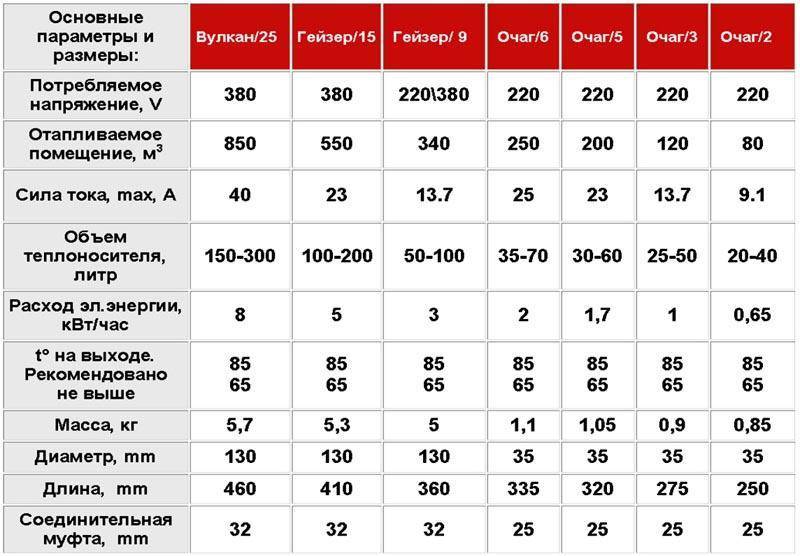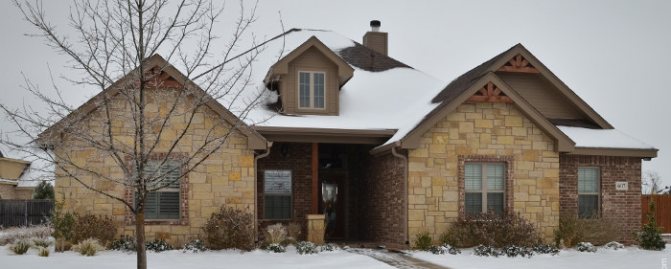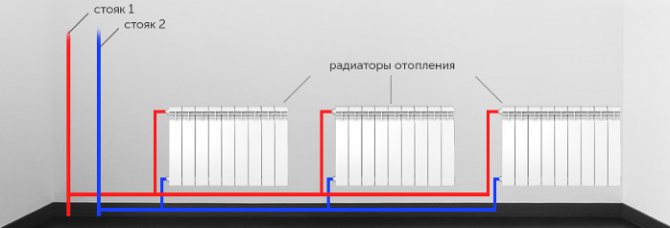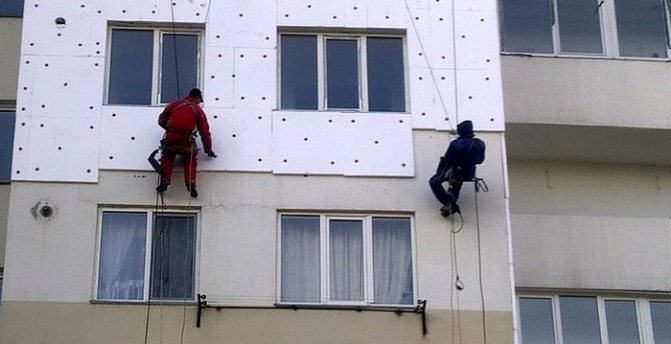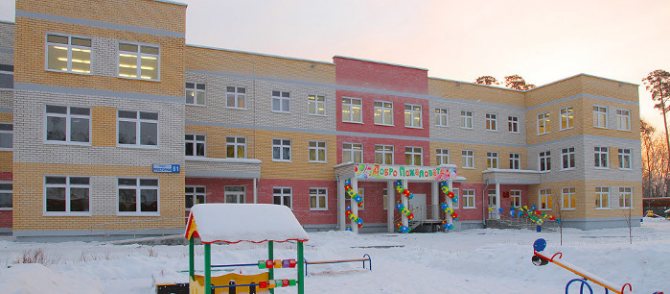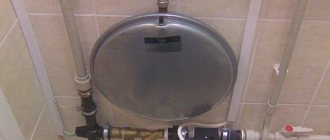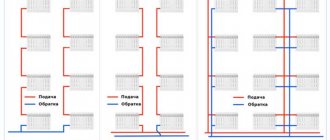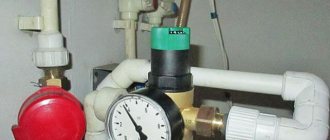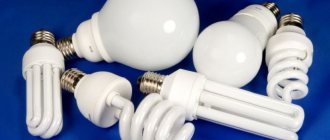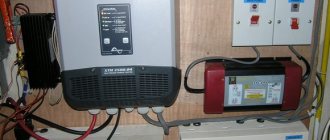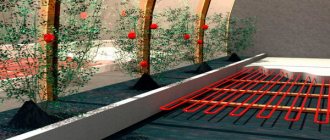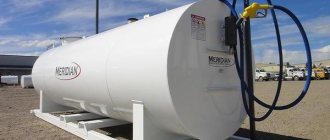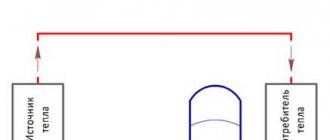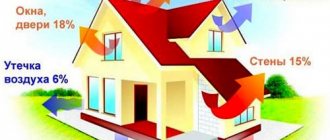Features of the
If there is a desire to reduce financial costs, first of all, you should understand what energy-efficient heating systems are. First of all, they allow more economical use of fuel resources and at the same time maintain the required temperature regime in the premises.
Not one method of providing heat to real estate and not separately taken models of heat generators are suitable for these characteristics. Currently, energy conservation involves the implementation of a whole range of measures aimed at saving money.
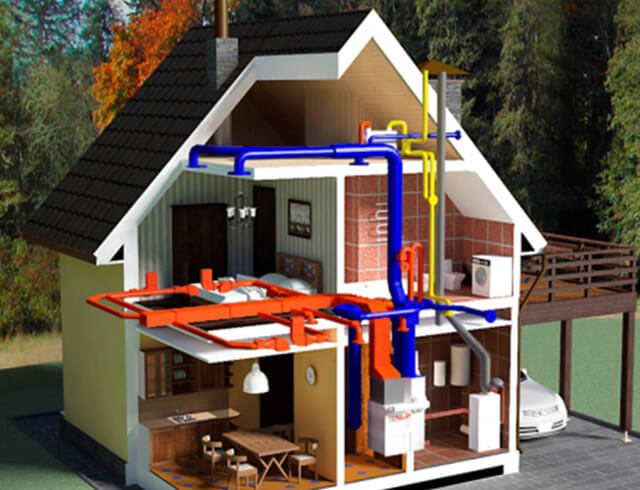
They will be different for each real estate object and consumer of thermal energy, but you can decide on the main directions in the implementation of energy saving.
Saving heat in the office
Saving energy in the office means following the same measures as in apartments, schools and kindergartens.
In addition, you can take advantage of such methods of saving heat, which are suggested below.
- Using carpet on the floor will reduce the amount of heat loss through the floor.
- The use of foam tiles or extruded polystyrene foam for finishing the ceiling will reduce heat loss through the ceiling.
- A fan located under the ceiling allows warm air to be dispersed throughout the room, which will make the use of thermal energy more rational.
- Rubber strips, fixed along the bottom edge of the door leaf, eliminate the gap between the door and the floor. The use of such pads is especially necessary if additional heaters are used in the office space and the temperature is higher than in the corridor.
The application of all of the above measures will reduce heating costs several times, and most importantly, will provide comfortable living, learning and working conditions.
What is the most profitable fuel
A considerable amount of money from the owners of private real estate is spent on the purchase of energy resources for the upcoming heating season. But different fuels have different efficiency and cost. Currently, the use of main gas is considered to be the most profitable, therefore it is he who is considered the classic raw material for energy-saving heating.
In regions with a lot of forest plantations, firewood is approaching an inexpensive price category, a similar situation is also associated with coal. This is followed by products of industrial processing of wood raw materials and agricultural waste, such as briquettes and pellets.
As for liquid fuel - oil, petroleum products, diesel fuel, etc., as well as liquefied propane - butane, their prices are 5-7 times higher than for gas from trunk networks. And electricity for heating the property will cost ten times more. By the way, the heat pumps used for generation operate on electricity, although it is not consumed much.
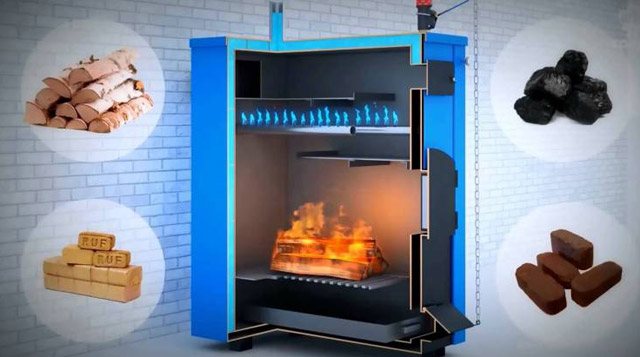

In different regions of the country, the situation with the provision of solid fuel is different. In some localities, it is quite affordable and has a favorable price due to the geographical location of the property. At the same time, the fuel should be brought to other places, otherwise it is reflected in the final costs for heat supply.
The situation with fuel resources is not bad for the owners of farms who have oil cake, husks, shells, or the owners of sawmills, who have access to free production waste - bark, wood chips and sawdust.
The efficiency of each type of fuel primarily depends on its quality characteristics. So when heating with dry wood, more heat energy is generated than when heating with wet raw materials. Hardwoods such as oak give off more heat.
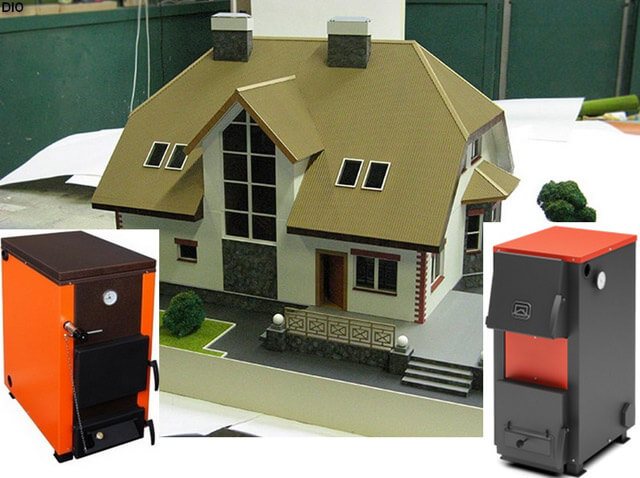

If a liquid fuel is used, for example diesel fuel, then for complete combustion it must contain a minimum amount of impurities and it must be frequently heated. In the event of a voltage drop in the mains, the performance of the heaters decreases. By the way, in order to equip energy efficient heat supply, there is no need to focus exclusively on one type of fuel resource. Parallel connection of heat generators, independently operating on different raw materials, is permissible.
For example, to install energy-saving heating systems, you can use an electric boiler and a solid fuel generator assembled in a single cascade - the first of the devices turns on at night, and the second in the daytime.
Monolithic quartz electric heaters
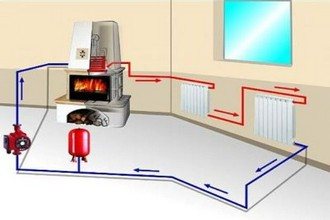

This type of heater uses the conversion of electrical energy into heat. Due to the presence of quartz sand in the structure of the device, a comfortable microclimate will be maintained in the room for a long time even after it is turned off.
The main advantages of this energy efficient heating are:
- low cost;
- long service life;
- high efficiency;
- ease of installation and maintenance;
- energy saving;
- high rates of fire and electrical safety.
The system consists of modules connected in parallel, the number of which depends on the size of the room. Monolithic quartz electric heaters can be controlled with a remote control.
Optimal fuel consumption
To make the heating of a house really economical, you need to use a heat generator that uses energy most efficiently. This has a lot to do with efficiency. The fact is that modern heating equipment from well-known companies consumes less fuel than similar units of outdated models.
Today, the latest heat generators are presented on the domestic market, providing energy-efficient heating, since they use advanced technologies in their manufacture.
For example, gas condensing boilers additionally extract heat energy from water vapor discharged with the smoke. Their efficiency reaches 110%, resulting in savings of blue fuel up to 15%.
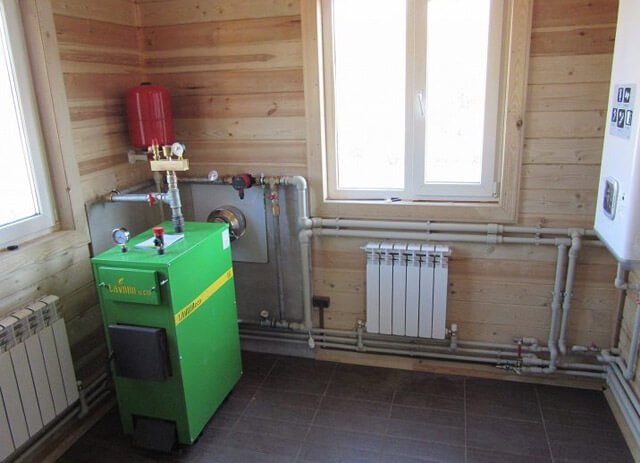

Among wood-fired units, gas generating or pyrolysis boilers can provide the most energy-efficient heating of a private house - their efficiency is close to 92%. In this case, there will also be fuel savings, since in traditional devices this figure does not exceed 80%.
If the house has radiator heating, and there is no alternative to using electricity, then it is better to consider the option of installing an induction unit, which does not have problems with scale and does not lose efficiency over time. When there are no pipelines and no heating fluid is used, instead of heaters, you can calculate the floor heating system.
Many private homeowners think that heat pumps can provide heating for free. But this is not true, because in order to extract heat from air, water or soil, you still need to expend energy.
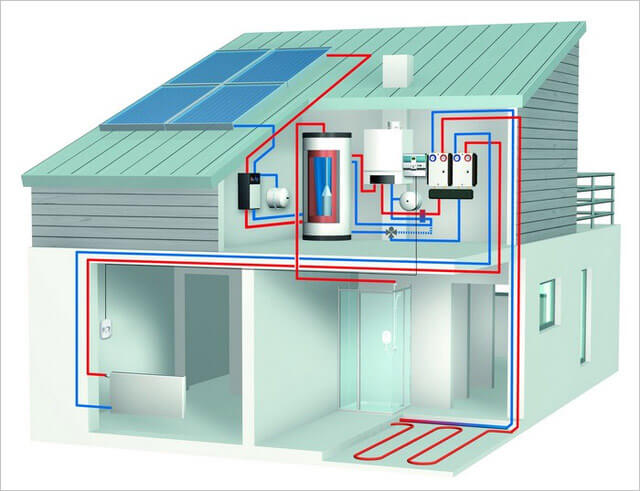

For example, even for highly efficient heat pumps, for geothermal plants with vertical probes, submerged in deep wells, the conversion factor is from 3 to 5. This means that it takes 1 kW of electricity to obtain heat energy equal to 3 kilowatts.
To equip this type of energy efficient system will require a large amount of start-up costs - in some cases, turnkey heat pump installation can cost tens of thousands of dollars.
The use of solar energy
In schools and kindergartens, many of the above-described energy saving methods associated with the insulation of walls, attics and enclosing structures can be used.
In addition, you can use the following methods to save heat.
- Basement insulation.
- Insulation of floors.
- Arrangement of vestibules.
- Decreased ceiling heights in classrooms.
- Removing vegetation that obscures the windows, allowing rooms to warm up on sunny days.
Note that a competent energy audit, thermal imaging inspection of your building and premises allows you to identify the main sources of heat energy losses and eliminate them.


How to save heat in an enterprise
Solar heat is an environmentally friendly and efficient source for a variety of heating systems. Some modifications use electricity as an additional power supply, others operate only from solar cells. In some cases, additional equipment is not necessary - there is enough sunlight.
Solar panels (collectors) are installed on the south side of the building at an angle so that they are heated by the sun's rays to the maximum. The system works in automatic mode: when the air temperature drops below the set point, the air is driven by the fans through the heating modules. One air battery allows you to heat a room up to 40 m², respectively, a set of collectors is able to serve the whole house.
We offer you to familiarize yourself with the design of a bathroom with a toilet: 95 photos how to create a stylish bathroom interior
For the southern regions, solar air collectors of modular type are quite effective and inexpensive equipment for creating a heating system.
Solar modules are environmentally friendly and cost-effective, they can be conveniently used in conjunction with other heating systems as a backup energy source. The design of the devices is simple, so there are diy diagrams for assembling solar panels. Ready-made collectors are also affordable and pay off quickly. The only thing that needs to be done before purchasing them is to calculate the power of the equipment and the sizes of the modules.
In cottages and country houses, solar panels are installed for backup power supply of direct current 12/24/48 Volts of low power or loads of alternating current of 220 Volts
Solar hot water systems are also suitable for any climate. The principle of operation of the system is simple: the water heated in the collectors flows through the pipes into the storage tank, and from it - throughout the house. The liquid is constantly circulated by the pump, so the process is continuous.
Solar hot water systems absolutely do not pollute the air and do not create noise, but their installation requires additional equipment: a pump, a pair of storage tanks, a boiler, a pipeline
No additional equipment is required for a passive solar heating device. The main conditions are three factors:
- perfect tightness and thermal insulation of the house;
- sunny, cloudless weather;
- optimal location of the house in relation to the sun.
One option suitable for such a system is a frame house with large glass windows facing south. The sun heats the house both from the outside and from the inside, as its heat is absorbed by the walls and floors.
With the help of passive solar equipment, without the use of power supply and expensive pumps, you can save 60-80% of heating costs for a private house
Thanks to the passive system in sunny areas, heating costs savings exceed 80%. In the northern regions, this heating method is not effective, therefore it is used as an additional one.
All energy-saving heating systems have advantages over conventional ones, the main thing is to choose the most optimal, possibly combined, option that combines work efficiency and resource saving.
- about the author
- Latest articles
yanana11Read more
- 10/14/2015 -Briquettes for heating: is it profitable in comparison with other types of fuel?
- 10/07/2015 - Flowing electric water heaters on the tap: an overview of the best offers on the market
- 04/06/2015 -How to make a solar battery on your own: step-by-step instruction
All articles
Features of the operation of an economical heat generator
In order to equip a truly energy-saving system, it is advisable to adhere to a number of recommendations regarding the selection and operation of boilers:
- You should purchase a heat generator that is optimal in terms of power. An excessive reserve of productivity, as well as its lack, leads to an overexpenditure of the fuel resource.
- Preference should be given to mono-fuel heating units. There is a rule about energy efficiency - universal heating is the enemy of good heating. But, if everyone needs such a device, it is better to give preference to a boiler with separate fireboxes, operating on several types of fuel.
- When the connection of the DHW circuit is required, it is not always necessary to purchase a double-circuit boiler, it will be enough to install an indirect heating boiler in the heating structure. The more accurately the control automation works, the more functional it is, the easier it is to set the most economical mode of operation of the heat generator.
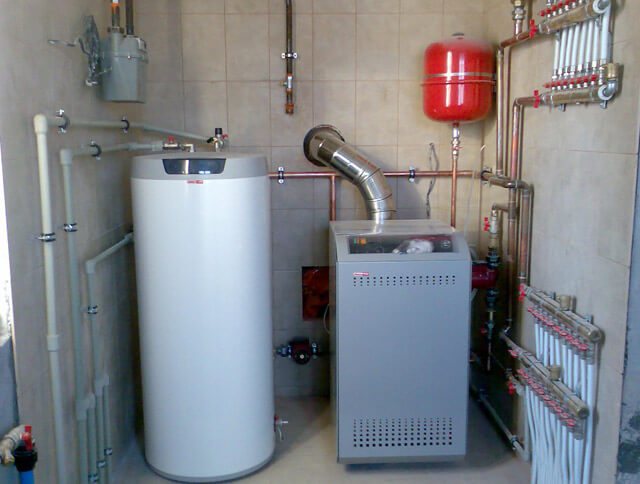

Less fuel is consumed by gas units that have:
- piezo ignition - there is no wick burning in a constant mode;
- modulating burner, thanks to which the performance in the entire range is controlled smoothly.
Competent use of the received heat
All generated heat energy must be managed economically. First of all, you need to generate as much heat as is required, since during the heating season the temperature outside the house window can change by several tens of degrees during one day.
In this situation, it is impossible to ensure energy saving in heating systems without automation, which, depending on the readings of temperature sensors, including those installed on the street, switches the operation of the boiler to a different mode. By reducing and increasing the productivity of the equipment in a timely manner, it is possible to minimize heating costs, which were impressive for old units operating on the "on-off" principle.
You can significantly save on heating if you use the programming of boilers using timers. For example, lowering the temperature in the rooms at night, when the family sleeps, or during the day, as residents leave for work or school, will not cause discomfort.
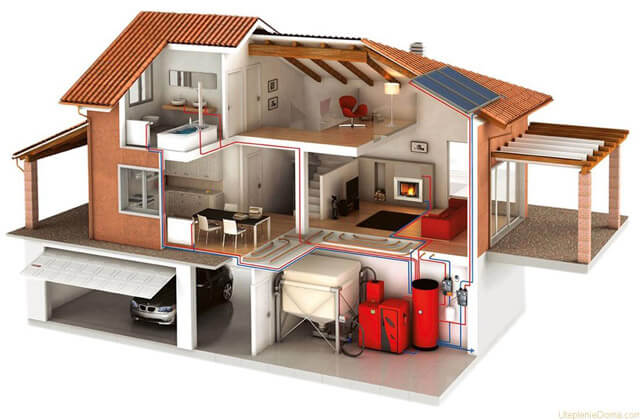

If the heating system has an electric heat source, energy-saving electric heating is created by installing a multi-tariff meter - it is at night that the heat generator will need to be activated.
Underfloor heating systems are classified as low temperature heating. As practice has shown, lowering the temperature of the working environment by 3 - 4 degrees leads to a saving of fuel resources up to 10%. Water heated floors show their best qualities when paired with a heat pump or pyrolysis unit.
Infrared heating systems
The reduction in energy consumption can be influenced by the modification of the usual, frequently used heating systems. For example, using a thermostatic valve will save up to 20% of energy resources. It is installed on the pipe directly in front of the radiator and allows you to regulate the heat transfer of the heater.
To maintain the set temperature in the room, the operation of the thermostatic valve can be switched to automatic mode by installing additional temperature sensors
Instead of introducing one part, you can completely replace the boiler or furnace with more modern equipment, originally designed to save energy resources.
We suggest that you familiarize yourself with the arrangement of a water well with your own hands rules of work
If your home's heating system is outdated, there is a great way to keep your energy costs down. Along with the device of high-quality thermal insulation, it is worth simply replacing the old equipment with an improved one: a new boiler, oil or gas oven. The efficiency of new systems is 90% or more.
Modern stoves, thanks to a branched system of air ducts, provide heat to every room in the house, and boilers supply heated liquid not only to radiators, but also to warm floors.
When modernized boilers and furnaces are used in a private house as energy-efficient equipment, the efficiency of the heating system increases to 92-94%
Electric ignition boilers have replaced ignition flame equipment, which, together with more efficient condensers and heat exchangers, reduces fuel consumption. The ventilation system has also changed. The combustion chamber is ventilated not with internal, as before, but with external air, that is, the air in the premises is practically not polluted.
As a result of design changes, boilers and furnaces operating on propane, gas or fuel oil have moved to the category of more economical in terms of fuel consumption, and their environmental class has also increased.
Modern electric boilers do not require a separate room and take up a minimum of free space, so they can be installed in any convenient place for service.
The large amount of a renewable resource like wood still makes wood-burning stoves popular outside the city. The simple design of heating equipment differs little from traditional village stoves: they are cast iron or steel devices equipped with a primitive ventilation system.
In detached houses that are not connected to the central power supply system, it is possible to use a modern wood-burning stove: the amount of pollution from it is much less than from a conventional stove
Wood-burning stoves have a very low efficiency - as a rule, they heat only those rooms in which they are located, that is, 1-2 rooms. It is possible to increase the efficiency of work by installing a combined gas-and-wood option, which uses not only wood, but also natural gas as a fuel. When using this type of equipment, the heating area is increased due to the branched air duct system.
There is a kind of furnaces that work on the principle of a boiler. They heat the coolant - the water circulating through the pipes. Such equipment is safer, as it is located outside the residential building.
The energy efficiency of heat pumps is based on the features of their operation: they extract heat from water and air. On the same basis, devices are divided into two groups:
- geothermal, operating due to the heat of the earth;
- air, extracting heat from the atmosphere.
Geothermal pumps are equipped with a system of wells reaching a depth of 200 m, or a horizontal pipeline laid below the freezing zone.If necessary, they can heat water, although not to the maximum, but to about 55 ° C.
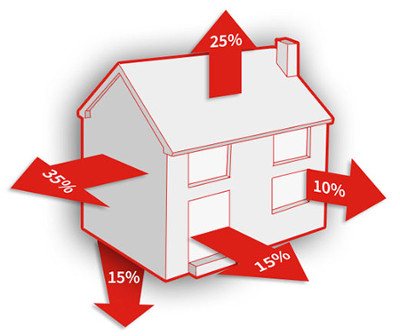

The energy efficiency of geothermal and air heat pumps is quite high: each 1 W of electrical energy used is converted into 3-4 W of thermal energy.
Air pumps are able to generate heat from the air even in 20-degree frost due to the refrigeration principle of operation. The heated air is distributed throughout the building using pipes. One of the advantages of heat pumps is reverse operation: in the summer heat, they can cool the premises.
An available sample of thermal equipment is a "mini-split" system, consisting of indoor and outdoor modules. Air source heat pumps are much cheaper and more affordable for country houses than geothermal installations.
An outdoor unit installed outside draws in cold air and heats (or cools) it. Instead of a duct system inside the building, panels are installed through which heated air enters the premises.
Infrared heaters have supporters and opponents. Many see them as the heating of the future - efficient, environmentally friendly, absolutely safe heating devices are installed in any part of the house: on the walls, ceiling and even in the floor. But ease of installation is not the main advantage of film panels.
When purchasing an infrared heater, pay attention to characteristics such as the intended installation height. The most common parameters are from 2.1 to 3.2 m
Infrared equipment hit the wide market back in 1967 and immediately became popular due to a completely new principle of operation. The panels heat, like the sun's rays, not the air in the room, but the surrounding objects, as a result, all surfaces in the room begin to radiate heat. The functionality of the appliances, which is comfortable for residents, is complemented by an aesthetic appeal, which interior designers are willing to use.
The heating process evenly distributes heat throughout the room, so there is no sharp difference between the air temperature near the floor and under the ceiling. The absence of temperature extremes saves energy by as much as 60%.
There are two common types of installation of infrared film panels: directly on the ceiling or under a decorative surface that is not an obstacle to I / C beams
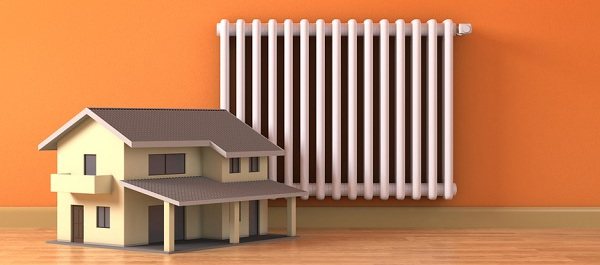

An example of infrared equipment is the PLEN system, which can completely replace centralized heating. Manufacturers give 50 years of operation without additional maintenance and 10 years of warranty. The power consumption of the system is no more than 20 W / m² per hour. A thin film in the laminate is attached to the selected place and does not clutter up the room, as heating radiators do. PLEN products are manufactured in Russia, so it is easy to purchase them from dealers anywhere in the country.
Preparation of a heat engineering calculation. Our experts will calculate all the heat losses that may affect the performance of the equipment.
Project creation. We will provide for the layout of communications and features of the location of equipment that generates heat. The resulting document serves as the basis for calculating the required number of fittings and the power of devices.
If the ceiling height is three meters or less, for 10 sq. m of area will be enough 1 kW of power.
We suggest that you familiarize yourself with How to clean a water cooler yourself
A double-circuit boiler will also provide housing with hot water.
If there is no gas connection, we will offer you alternative solutions.
Assistance in choosing heating devices. Our company works with the brands BUDERUS, Ferroli and Prorherm. This is a quality proven technique, choosing which you do not have to worry about possible leaks, sudden power drops, etc.
Our experts will come directly to the object and will advise you absolutely free of charge on all your questions!
Having completed the installation of the heating system at home, we will also carry out commissioning work. That is, you will be able to use the equipment to its full extent immediately after its installation.
Having decided to order the installation of a heating system, if necessary, you can use the option of payment by installments.
Did you find our offer interesting? Or maybe, in addition to installing a heating system for a country house, you need other services that are part of the scope of our company? Place a complex order with us and we will give you a personalized discount.
More detailed information can be obtained by phone: 8 (495) 744-67-74
The principle of operation of infrared heating devices of any design is to convert electricity into heat, giving the latter in the form of infrared radiation. With the help of this radiation, the device heats up all surfaces that are in its zone of action, and then the air in the room is warmed up from them. Unlike convective heat, such heat does not affect a person's well-being and in this regard is considered the best option.
New products on the modern market, gaining more and more popularity, are 2 types of infrared systems:
- long-wave ceiling heaters;
- film floor systems.
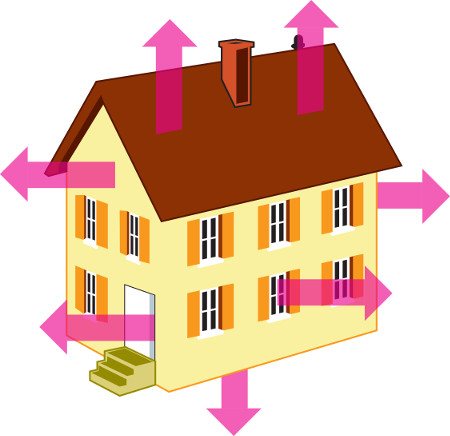

Unlike the usual UFO-type heaters, long-wavelength emitters do not glow, since their heating elements work according to a different principle. The aluminum plate is heated by a heating element attached to it to a temperature of no more than 600 ºС and gives out a directed stream of infrared radiation with a wavelength of up to 100 microns. The device with the plates is suspended from the ceiling and heats the surfaces located in the area of its action.
In fact, such energy-saving electric heating systems will give the room exactly as much heat as the energy consumed from the network. They will only do it in a different way, through radiation. A person can feel the heat flow only when they are directly under the heater.
To raise the air temperature in a room, such systems, in contrast to convective ones, take a long time. This is not surprising, because the transfer of heat does not go directly to air, but through intermediaries - floors, walls and other surfaces.
The importance of correct wire routing
The resulting heat should be delivered to the right place in the required amount. Of course, the best solution would be to carry out thermal and hydraulic calculations, so that, according to their results, the correct distribution scheme, the diameter of pipes in all sections of the circuit, the type and number of radiators.
To balance the heating system, a control valve should be installed on each heater - a tap or a thermal head, so that in all living rooms you can set the temperature that ensures comfortable living, and make the air cooler in the back rooms.
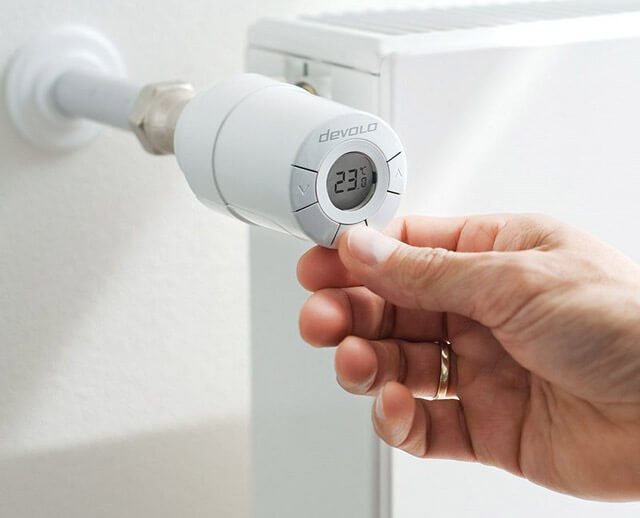

It is the radiators that are the main heat exchangers in the rooms, therefore, in order to reduce heat loss, experts recommend insulating the distribution pipes with sleeves made of foamed polymers, and laying sheet materials that reflect heat between them and the enclosing structures.
Also, do not forget about the use of circulation pumps. The fact is that a heating system with natural circulation is much inferior in energy efficiency to pressure structures.
Infrared energy efficient heating
Often the heating season begins much later than the onset of cold weather. At the same time, the presence of heat supply does not always guarantee that the temperature regime will be optimal and comfortable.
To make it comfortable and comfortable to live in the house during the cold season, you can equip energy-saving infrared heating by purchasing special heaters. They are much more convenient than traditional radiators and have many advantages.
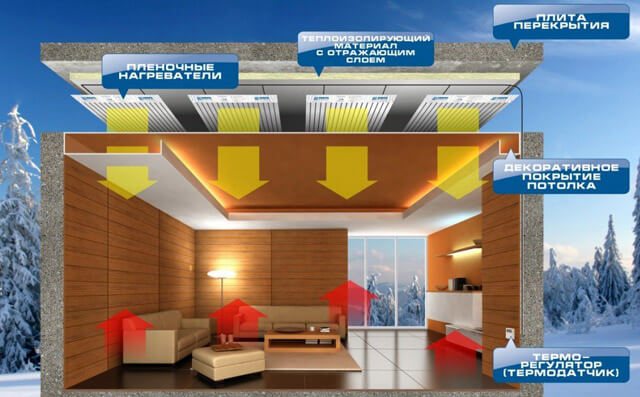

Universal infrared heating panels are highly efficient devices that meet all modern requirements - environmental, technical, economic and aesthetic.
Infrared energy-saving heating panels are installed in all types of premises, they are used as the main and additional heating. The panels are durable, reliable and fireproof, they do not corrode.
High-quality home insulation for energy-efficient heating
Don't rely entirely on modern technology. The heating system will never become energy-saving if the house is not insulated to the maximum, for which:
- It is necessary to insulate the enclosing structures, especially the outer ceilings and external walls.
- Attention should be paid to openings - window and door, since through them the main loss of heat occurs. There is no need to save money on windows, balcony and entrance doors; from them, you should choose the products that are most protected from heat transfer.
It is advisable to refuse to ventilate with transoms or vents, and prefer the normal option by installing adjustable inlet valves on the windows.

